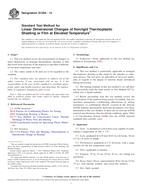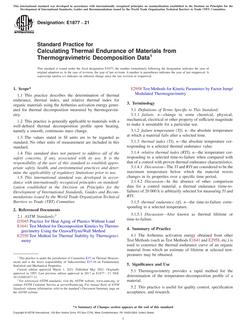Click here to purchase
1.1 This test method covers the determination of hydrocarbon types over the concentration ranges from 5 to 99 volume % aromatics, 0.3 to 55 volume % olefins, and 1 to 95 volume % saturates in petroleum fractions that distill below 315°C. This test method may apply to concentrations outside these ranges, but the precision has not been determined. Samples containing dark-colored components that interfere in reading the chromatographic bands cannot be analyzed.
1.2 This test method is intended for use with full boiling range products. Cooperative data have established that the precision statement does not apply to narrow boiling petroleum fractions near the 315°C limit. Such samples are not eluted properly, and results are erratic.
1.3 The applicability of this test method to products derived from fossil fuels other than petroleum, such as coal, shale, or tar sands, has not been determined, and the precision statement may or may not apply to such products.
1.4 This test method has two precision statements depicted in tables. The first table is applicable to unleaded fuels that do not contain oxygenated blending components. It may or may not apply to automotive gasolines containing lead antiknock mixtures. The second table is applicable to oxygenate blended (for example, MTBE, ethanol) automotive spark ignition fuel samples with a concentration range of 13-40 volume percent aromatics, 4-33 volume percent olefins, and 45-68 volume percent saturates.
1.5 The oxygenated blending components, methanol, ethanol, methyl-tert-butylether (MTBE), tert-amylmethylether (TAME), and ethyl-tert-butylether (ETBE), do not interfere with the determination of hydrocarbon types at concentrations normally found in commercial blends. These oxygenated components are not detected since they elute with the alcohol desorbent. Other oxygenated compounds shall be individually verified. When samples containing oxygenated blending components are analyzed, correct the results to a total-sample basis.
1.6 The values stated in SI units are to be regarded as standard.
Note 1 – For the determination of olefins below 0.3 volume %, other test methods are available, such as Test Method D 2710.
1.7 This standard does not purport to address all of the safety concerns, if any, associated with its use. It is the responsibility of the user of this standard to establish appropriate safety and health practices and determine the applicability of regulatory limitations prior to use. For specific hazard statements, see Section 7, 8.1, and 10.5.
Product Details
- Published:
- 11/01/2003
- Number of Pages:
- 8
- File Size:
- 1 file , 160 KB


